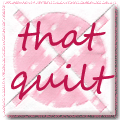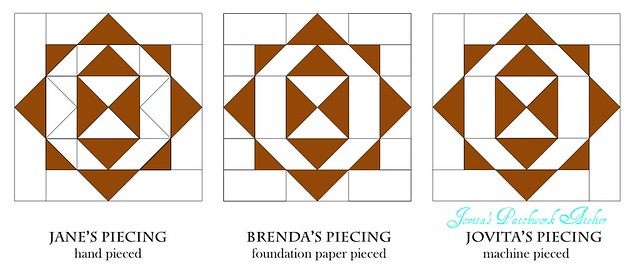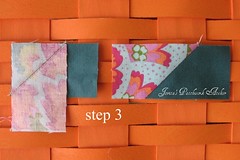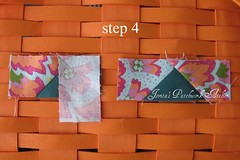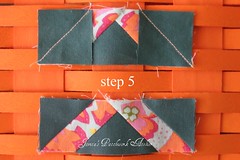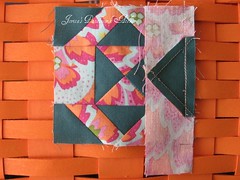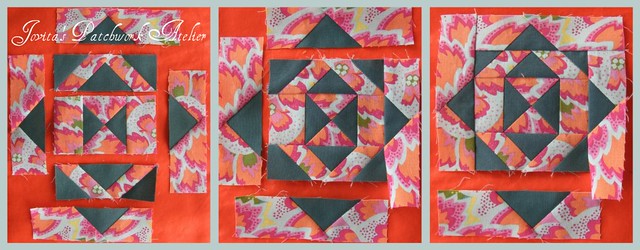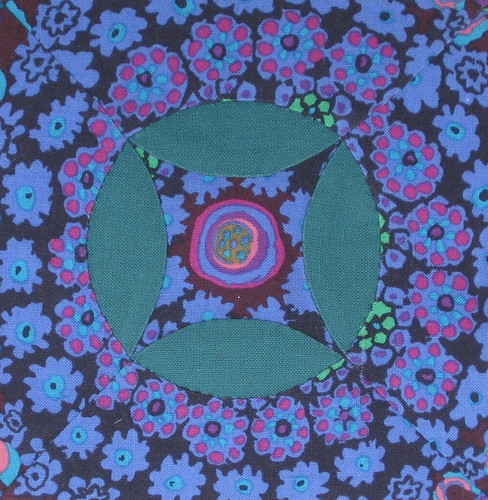
Dear Jane® book reference: Block A-3, page 18
Jovita's Method: hand pieced
My comments: I looked at this block for a few minutes, first at the diagram and then at the picture of Jane's block and noticed that four of the seams were missing. Once again, a choice. With the seams, it makes hand piecing (which I think is what Jane did) much easier. Without the seams, then applique makes sense. It didn't take me long at all to decide to hand piece it and I'm glad I did because it went together like a charm - except for that wonky seam in the top left corner - must go see what I did funny there.
I did do a bit of preparation first though. Here are the steps that I followed:
- transfered pattern to freezer paper and added one registration mark along each curved edge ... this is where I might have gone a tad wrong.
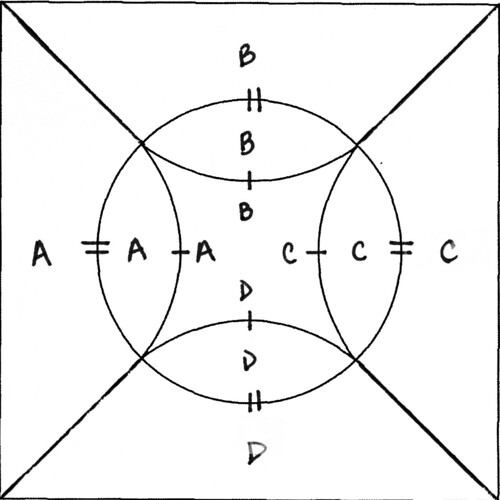
- cut out the pattern pieces and iron them to the wrong side of my fabrics - remember to keep the grain of the fabric running in the right direction.
- I pieced the melon shapes first to the center shape.
- then pieced each side piece .. working around in a circle. when I got to the end of one I just picked up the next and kept going.
- once all four sides were complete I went back and sewed the diagonal corners. I did think about coming downstairs and sewing them by machine to make it quicker but I was settled so nicely into the sofa that I just kept going by hand.
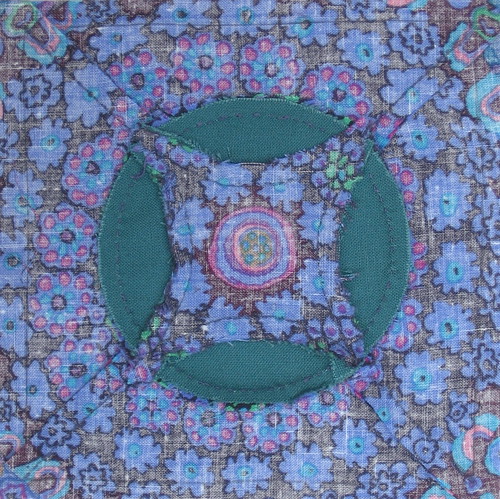
Here's a picture of the back so you can see how I pressed my seams. I'm sorry I didn't take more pictures along the way, but next time I will ... I tend to do handwork in the evenings when the light for photographs is just too crappy. And I know the colors don't seem great here, but it all fits into the scheme of my plan for this quilt.
Of course, there are OTHER OPTIONS for piecing this block, here are just a few while browsing on-line.
Many approach this block with applique, as suggested by www.dearjane.com's block tips.
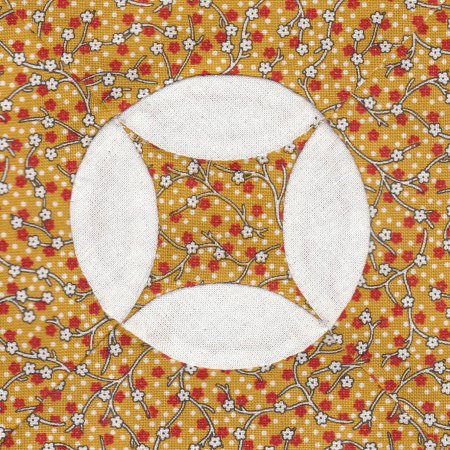 Kate machine pieced the background and then hand-appliqued the melons on top.
Kate machine pieced the background and then hand-appliqued the melons on top. It appears that Jayne appliqued first the white circle onto the (un-pieced) background and then appliqued the center piece on top of the white.
It appears that Jayne appliqued first the white circle onto the (un-pieced) background and then appliqued the center piece on top of the white.And Anina, does a fabulous job appliqueing this block, including reverse applique for that tricky "circle."
You might want to check out Karissa's block too, she just fudged the melons a bit so she could applique them all in one piece. Carrie did the same thing.

And I just found this one .. I like this .. great compromise. Karen hand-pieced the melon piece to each quarter then appliqued that to the center piece - genius!! A tiny bit of hand piecing - great for practice, no reverse applique and the best results I've seen so far :)



